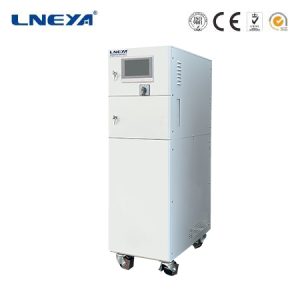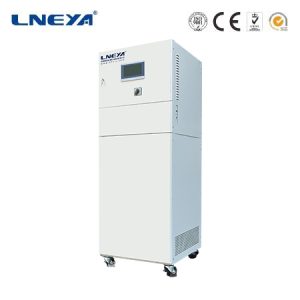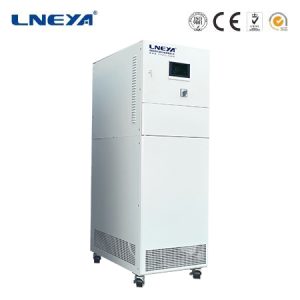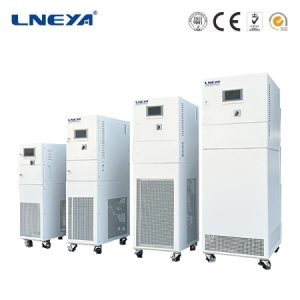Liquid Cooling for Data Centers
With the vigorous development of cloud computing and big data technology, the gradual improvement of IT equipment performance directly leads to the continuous increase of server power consumption, especially the CPU, which is a key component of the server, the power consumption increases significantly with the performance improvement. Common computer room cooling mainly relies on air cooling to cool servers, which cannot meet the requirements of high power density equipment. The solution of data center cooling technology is getting closer and closer to electronic equipment. From the room to the rack row, from the rack row to the rack and cabinet door for heat exchange, to today cooling chips and other equipment inside the server. Close to the heat source, the nearest cooling has become the trend of technology development. With the development and improvement of chip cold plate and coolant enhanced heat transfer technology, liquid cooling has become a new round of hot spots in the industry.
The principle and three forms of liquid cooling
According to the research on the current technical process, according to the cooling principle, the liquid cooling technology is mainly divided into three main forms: cold plate, immersion and spray.
1. Cold plate liquid cooling
The original intention of the research and development of the cold plate liquid cooling technology is to avoid direct contact between the cooling liquid and the server. This technology precisely cools components such as the main heat source CPU and memory. The liquid-cooling channel is composed of a water-cooled heat pipe radiator, a liquid-cooling distribution unit, a liquid-cooling maintenance unit, a liquid-cooling temperature control unit, a natural cooling unit, and pipelines for primary/secondary cooling loops. In the cold plate liquid cooling system, the CPU and other high power consumption components adopt liquid cooling cold plate to dissipate heat, and other small heat generating devices such as hard disks and interface cards still adopt the air cooling system.
The cold plate liquid cooling technology is based on the conventional air-cooled server. The CPU and the memory side are attached to a plate heat exchanger. The heat of the chip is conducted to the fluid in the plate through heat conduction. The fluid is an insulating medium, which can be deionized water, ethylene glycol, etc. Solution, fluorinated liquid, etc., or phase-change heat pipe (the heat pipe conducts heat to the water system outside the machine room through the heat exchanger). The cooling plate and the PU/GPU (high heat flux component) of the server take away the main heat of the server through direct contact (there are two forms of heat pipe and liquid heat dissipation in the cold plate), and the heat of the rest of the components (low heat flux components) can be The heat dissipation technology combined by liquid cooling and air cooling is called liquid/air dual-channel heat dissipation technology.
Compared with traditional rack-mounted air-cooled servers, this technology has significantly improved resource utilization. While reducing the total cost of ownership, it has significantly increased the energy utilization efficiency of the data center. Moreover, the installation and maintenance of servers is basically the same as that of conventional air-cooled servers, so the operation and maintenance difficulty of this liquid cooling technology is basically the same as that of traditional row-level air conditioners.

2. Immersion liquid cooling
Immersion liquid cooling can be divided into phase change immersion liquid cooling and non-phase change immersion liquid cooling technology according to whether the cooling medium undergoes phase change during the heat exchange process.
The principle of non-phase-change immersion liquid cooling technology is to immerse the IT equipment directly in the insulating cooling liquid. After the cooling liquid absorbs the heat generated by the IT equipment, it transfers the heat to the water in the heat exchanger through circulation, and then transfers the heat through the water circulation. to an outdoor heat sink. Due to the fanless design of the server, this technology has lower noise, and the noise value can be controlled below 45dB. At the same time, the power consumption of the fan is saved, and the overall power consumption of the server is reduced by more than 10%.
The principle of phase change immersion liquid cooling technology is to immerse the IT equipment in the cooling fluid whose boiling point is lower than the operating temperature of the IT equipment. When the operating temperature of the IT equipment reaches the boiling point of the cooling fluid, it will cause partial boiling of the cooling fluid, cooling During the boiling process, the heat generated by the IT equipment is taken away.
Immersion liquid cooling has clear advantages. First, in the immersion liquid cooling, the cooling liquid is in direct contact with the heating equipment, which has low convective thermal resistance and high heat transfer coefficient; secondly, the cooling liquid has high thermal conductivity and specific heat capacity, and the operating temperature change rate is small ; Again, this method does not require fans, reduces energy consumption and noise, and has high cooling efficiency; finally, the coolant has excellent insulation performance, high flash point, non-flammable, non-toxic, harmless, and non-corrosive. Therefore, this liquid cooling technology is suitable for large-scale data centers, supercomputing, industrial and other computing fields and scientific research institutions that have high demand for heat flux density and green energy saving, especially for those located in severe cold, high altitude areas, or with special terrain and limited space Data centers with high environmental noise requirements, close to people’s offices and residences, and data centers that need to be silent have obvious advantages.

3. Spray liquid cooling
The spray liquid cooling system adopts a certain cooling liquid and uses the cooling liquid to directly or indirectly absorb heat and remove the waste heat released by the device to the external environment of the IDC for centralized heat dissipation. The main feature of the spray liquid cooling is that the cooling liquid with insulating and non-corrosive properties is directly sprayed on the surface of the heating device or the extended surface in contact with the heating device to absorb heat and drain away. The drained hot fluid is directly and indirectly connected to the external environment. Large cold source for heat exchange.
Spray liquid cooling refers to the modification of IT equipment and the deployment of corresponding spray devices. When the equipment is running, it is a liquid cooling method to cool the overheating components in a targeted manner. The characteristic of this method is that it does not need to make too many changes to the infrastructure of the computer room, and only needs a small amount of modification to the server to achieve better cooling performance. The spray-type liquid-cooled cabinet system includes three parts: the spray-type liquid-cooled cabinet system (including pipelines, liquid distribution system, liquid return system, and PDU), liquid-cooled servers, and coolant. The spray-type liquid-cooled cabinet is connected to the indoor heat exchanger through pipelines, that is, the waste heat of chips in the cabinet is absorbed by the cooling liquid and transferred to the indoor heat exchanger for heat exchange with the outdoor heat exchanger.
The spray liquid cooling system has the characteristics of high device integration, strong heat dissipation efficiency, high efficiency, energy saving, and quietness. It is one of the effective means to solve the deployment of high-power consumption cabinets in IDC equipment rooms, reduce IT system cooling costs, improve energy efficiency, and reduce TCO.

 LNEYA
LNEYA
 简体中文
简体中文

















































































